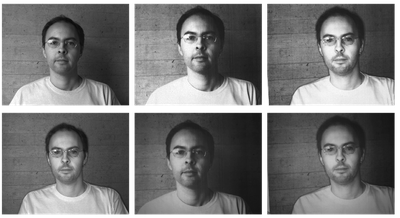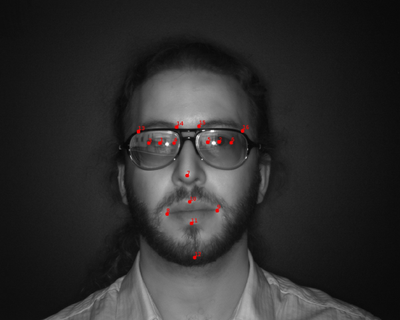Multispectral-Spoof (MSSpoof)
Description
The Multispectral-Spoof face spoofing database is a spoofing attack database build at Idiap Research institute. It contains images of real accesses recorded in VIS and NIR spectra as well as VIS and NIR spoofing attacks to VIS and NIR systems. The number of clients in the database is 21. The recordings are done using a uEye camera with resolution 1280x1024. When recording the images in NIR, a NIR filter of 800nm has been mounted to the camera.
Recording the real accesses
The set of real accesses contains recordings of VIS and NIR images for the identities. For each identity, a total of 5 images in VIS and 5 images in NIR are recorded for each of 7 environment conditions. 1 of these conditions is set up in an hallway space, while the rest 6 conditions are set up in an office. So, in total, the database contains 7*5=35 images per client in VIS and 7*5=35 images per client in NIR spectrum. Thus, the total number of real accesses per client is 70.
Recording the spoofing attacks
For each client in the database, 3 images in VIS and 3 images in NIR are selected from the original database. The chosen images are from the ones with the best quality in terms of recording conditions. These images are then printed on a paper using black & white printed with resolution of 600dpi. During the recording of the spoofing attacks, the printed images are attached on a fixed support. For each of the printed images, we recorded 4 spoofing attacks in 3 lighting conditions, both in VIS and NIR spectra. Thus, the total number of spoofing attacks per client is 6 * 2 * 3 * 4 = 144.
Examples of the database are shown in the figure below. The first row are images taken with in VIS, while the second one are images taken in NIR. The first column are real accesses. The second column are VIS attacks. The third column are NIR attacks.
Database protocol
The recorded images are divided into train, development and test set, and the clients in each of the sets do not overlap. There are 9 clients in the train subset, 6 in the development and 6 in the test subset. The subsets do not overlap, meaning that a client in one subset can not appear in any other subset.
- Client IDs in the world subset: 2,4,7,9,10,12,16,17,21
- Client IDs in the dev subset: 1,3,5,6,8,11
- Client IDs in the test subset: 13,15,18,19,20,22
Out of the 75 real access images per client, 10 are taken into the enrollment set: 5 from VIS and 5 from NIR spectra.
The table below shows the total number of images per type of sample in the real accesses.
| filter | train | dev | test | enroll | total |
|---|---|---|---|---|---|
| VIS | 35*9=315 | 35*6=210 | 35*6=210 | 5*21=105 | 840 |
| NIR | 35*9=315 | 35*6=210 | 35*6=210 | 5*21=105 | 840 |
| total | 630 | 420 | 420 | 210 | 1680 |
Below is a similar table showing the figures for the spoofing attacks.
| orig. image | filter | train | dev | test | total |
|---|---|---|---|---|---|
| VIS | VIS | 36*9=324 | 36*6=216 | 36*6=216 | 756 |
| VIS | NIR | 36*9=324 | 36*6=216 | 36*6=216 | 756 |
| NIR | VIS | 36*9=324 | 36*6=216 | 36*6=216 | 756 |
| NIR | NIR | 36*9=324 | 36*6=216 | 36*6=216 | 756 |
| total | 1296 | 864 | 864 | 3024 |
Annotations
For each of the samples, we provide manual face annotations, given with the (x,y) coordinates of 16 key points on the face. The annotated key points are illustrated in the image below.
Reference
I. Chingovska, N. Erdogmus, A. Anjos. S. Marcel, “Face Recognition Systems Under Spoofing Attacks”, in Springer “Face Recognition Across the Imaging Spectrum” (Editor Thirimachos Bourlai), 2016.
10.1007/978-3-319-28501-6_8
https://publications.idiap.ch/index.php/publications/show/3539

